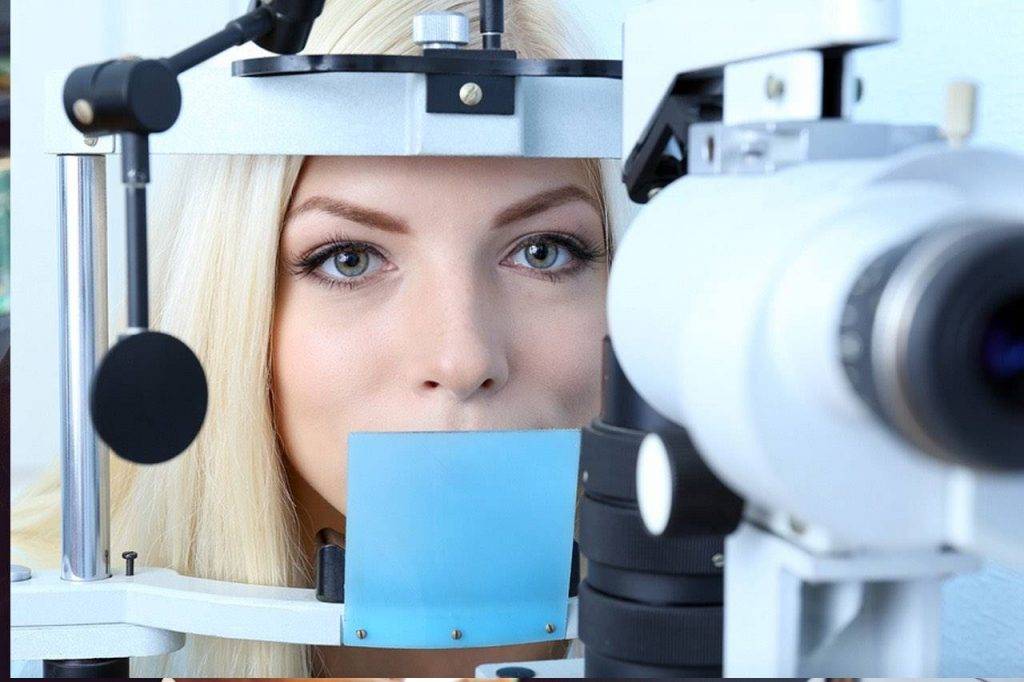Dry eye syndrome affects up to 50% of all adults.
Dry eye syndrome is a chronic condition that occurs when the eyes cannot produce a sufficient amount of tears to lubricate the eyes, or the quality of the tears is inadequate to maintain eye moisture.
If you are experiencing symptoms of dry eye, schedule an appointment for an eye exam. During your exam, your eye doctor will perform a series of diagnostic tests to carefully evaluate your tears, eyelids and cornea, and assess your blink dynamics— how often and effectively you blink.
Common symptoms of dry eye
- Dry, irritated, or red eyes
- Itchiness
- Burning
- Excessive tearing/watery eyes
- Sensitive or sore eyes
- Foreign body sensation
- Eyelid inflammation
- Eyelid discomfort
- Blurriness
If you feel you have any signs of allergy eyes above, contact an eye doctor near you, who can diagnose and treat the condition.
SEE RELATED: Why Do Dry Eyes Affect Women More Than Men?
Dry eye assessment
At the start of your exam, your eye doctor may conduct an in-depth assessment of your symptoms and their severity.
Your eye doctor will then decide on an appropriate battery of diagnostic tests to aid in the diagnosis of dry eye syndrome and rule out any other eye diseases or health problems that may be causing your dry eyes.
Diagnostic tests for dry eye syndrome
1. Schirmer’s test
This is the most common and basic of the dry eye tests. Your eye doctor may use the Schirmer’s test to determine if your eyes produce enough tears to maintain moisture.
During this test, your eye doctor will place a strip of medical paper inside your lower eyelids and instruct you to close your eyes. The strip of paper will absorb your tears and indicate the volume of water present in your tear film. After five minutes, your doctor will examine how far the tears have traveled on the paper. Traveling less than 15mm indicates dry eyes.
2. TearLab
TearLab is used to assess the osmolarity of your tears, or the saltiness of your tears. An osmolarity that is low and stable across both eyes will ensure that your eyes remain healthy and moist.
Healthy tears consist of a balanced combination of salt, water, and oil. If your tear quality or quantity is diminished, or the osmolarity of your tears is too high, the surface of your eye can become damaged, and dry eye syndrome can result.
Furthermore, a significant difference in osmolarity of the two eyes may indicate the presence of dry eye syndrome.
During this test, your eye doctor will collect a small sample of your tears. The TearLab device will then assess the osmolarity and make-up of your tears to provide quantitative diagnostic information.
3. Phenol red thread test
This test evaluates the overall volume of your tears to determine if the aqueous layer of the tears is diminished. When this occurs, it can inhibit the tears from spreading across the eye’s surface adequately and cause dry eyes.
During this test, your optometrist will drape a thin red thread string over your eyes to observe the amount of tears your eyes produce in just a few seconds. Your doctor will then compare the results of each eye.
4. Tear break up time (TBUT)
This test is used to examine tear breakup time, or the amount of time it takes for your tears to evaporate. When the tears evaporate too quickly, they cannot effectively lubricate the eyes— resulting in dry eyes.
During this test, your eye doctor will gently touch your eye with a sterilized blotting paper that contains a fluorescein orange dye. As you blink, the dye will spread and gently coat the tear film covering your cornea.
A blue light will then be used to make your tears glow, and help your doctor to track their rate of evaporation, as well as highlight any problems or corneal damage that dry eyes may have caused.
5. LipiScan
Since meibomian gland dysfunction (MGD) is a common cause of chronic dry eyes, it’s important to assess the health of your meibomian glands. LipiScan is a diagnostic imaging device that provides high-resolution digital images of the lower and upper meibomian glands.
With this state of the art imaging device, your eye doctor can determine if your meibomian glands are healthy or blocked, dilated or atrophied. It can also provide information about the oil that is produced by these tiny glands, and facilitate detection of a bacterial presence that may be contributing to inadequate tear quality and dry eye symptoms.
6. InflammaDry
InflammaDry is a specialized diagnostic tool used to identify elevated levels of MMP-9 in your tears. MMP-9 is a protein found in the inner lining of your lower eyelid. High levels of MMP-9 can indicate eyelid inflammation, a common symptom of dry eye syndrome.
LEARN MORE: Guide to Eye Conditions
If you are experiencing symptoms of dry eye, schedule an appointment with your optometrist as soon as possible for a comprehensive eye exam.
The sooner you see your doctor, the sooner you will receive the most appropriate treatment to alleviate your discomfort.









